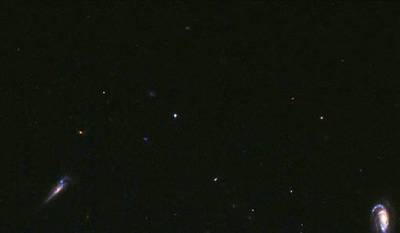This is according to a lightning study conducted at Ohio University
Avi Blizovsky

.
If you don't sleep well at night because you're afraid that the Earth will suddenly vaporize because it will catch a large dose of gamma radiation from the universe, you can sleep peacefully.
Several scientists have investigated whether deadly astronomical events known as gamma-ray bursts can occur in galaxies like ours. Those scientists, from Ohio University, and their colleagues from all over the world determined that the probability tends to zero.
Gamma-ray bursts (GRBs) are high-energy pulses of light emitted from the magnetic poles of a certain type of star during a supernova explosion, says Christoph Stanek, professor of astronomy at Ohio State University. According to him, the scientists suspect that if such an eruption were to occur in the vicinity of the solar system, and one of the rays would cause a direct impact on the Earth, it could cause a mass extinction all over the world.
Even such an eruption less than 3,000 light-years away would cause damage, says Tank. But this region, although it contains many stars, is still insignificant compared to the Milky Way.
In the new study, published in the Astrophysical Journal, Tank and his colleagues write that gamma ray bursts tend to occur in small, irregular galaxies that lack heavy elements (astronomers usually refer to all elements other than hydrogen, helium and lithium as metals). Even among the metal-poor galaxies, such events are rare, astronomers discover a GRB only once every few years. However, the Milky Way is different from the multi-burst galaxies in all possible features - it is a large spiral galaxy with many heavy elements.
The astronomers performed a statistical analysis of four such bursts that occurred in nearby galaxies, explained Oleg Gandin, a postdoctoral fellow in Ohio. "They compared the mass of all four host galaxies, their rate of new star formation and their metal content to other galaxies cataloged in the Sloan Digital Sky Survey.
Although the number four sounds like a small example compared to the number of galaxies in the universe, it was a good choice because the astronomers had data to compare. says a tank. All four were small galaxies with high star formation rates and low metal contents.
Of the four galaxies, the one with the highest metal content - and closest to the Milky Way was home to the smallest burst. The astronomers calculated that the chance of an explosion in a galaxy of this type is 0.15 percent. For the Milky Way, the metal content is twice that of that galaxy, so the odds would be even lower than this rate. "We didn't even try to calculate their odds for our galaxy, because 0.15 percent sounds low enough.
According to him, some researchers believe that such an eruption was the cause of the mass extinctions in the history of the earth and his work suggests that this was not the case.
Astronomers have been studying gamma ray bursts for over 40 years, and only recently did they discover where they came from. In fact, it was Stank who led the research group that linked GRBs to supernovae in 2003.
He and Gendin explained that when a rapidly rotating massive star explodes and goes supernova, its magnetic field directs gamma rays to flow only toward its magnetic poles, creating compressed, energetic jets. So energetic that they can destroy life on planets in their path. Some researchers believe that such an event could have caused the mass extinction 450 million years ago. But now it turns out that such eruptions do not occur in places where there is life. "Planets require metals to form." Tank said, and metal-poor galaxies may contain fewer planets and less chance of life," he said.
According to him, he did not intend to answer the question of mass extinctions, but the issue came up in a general meeting of the faculty. In February, Tank published an article about an outburst he had studied, and during a coffee break one of the students asked him if it was a coincidence that the outburst occurred in a metal-poor galaxy. "My initial reaction was that this is not a coincidence, and everyone knows that the bursts occur in metal-poor galaxies. But then people asked me, is this really known and common, has anyone proven it, and then I realized that no one has proven it."
As a result, a group of astronomers from all disciplines was formed to write a paper that would prove or disprove this figure, a group that, according to Tank, is difficult to form in these days of specialized research. The authors, who were the coffee partners that morning and some of Stank's research colleagues from other universities were recruited to assist them. And this is how the current study was created, which was funded by the National Science Foundation in the USA.
